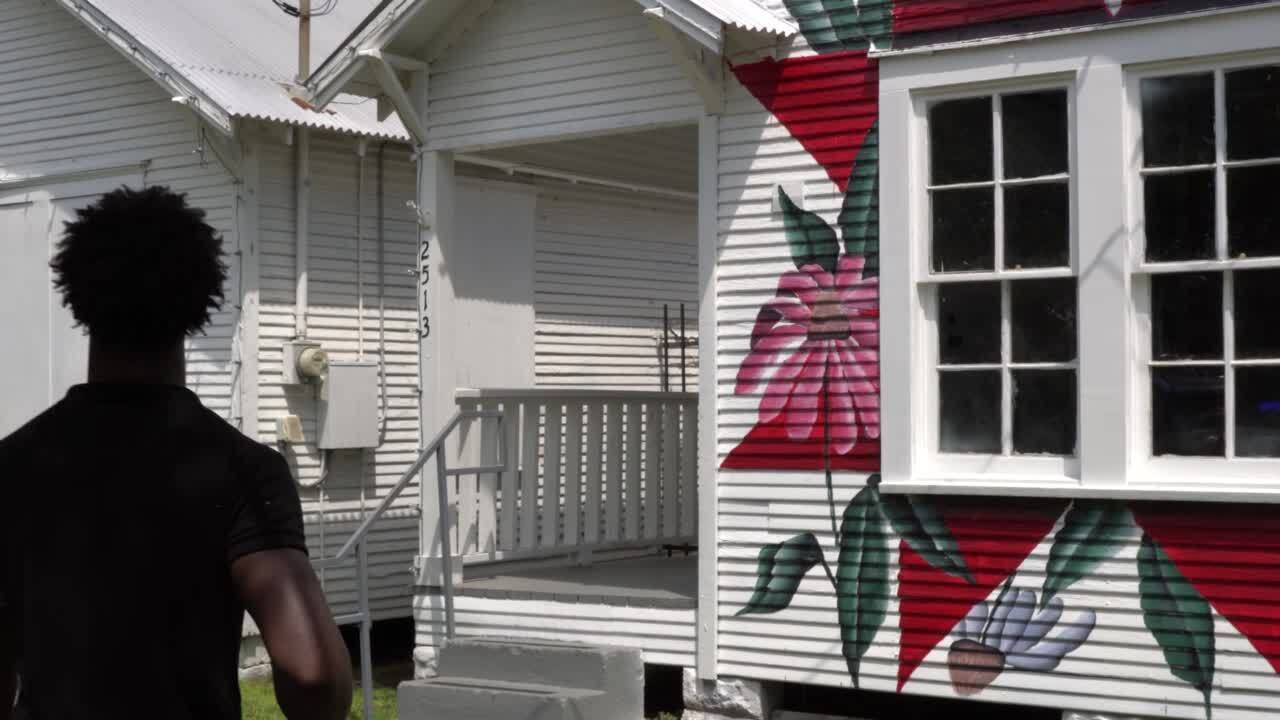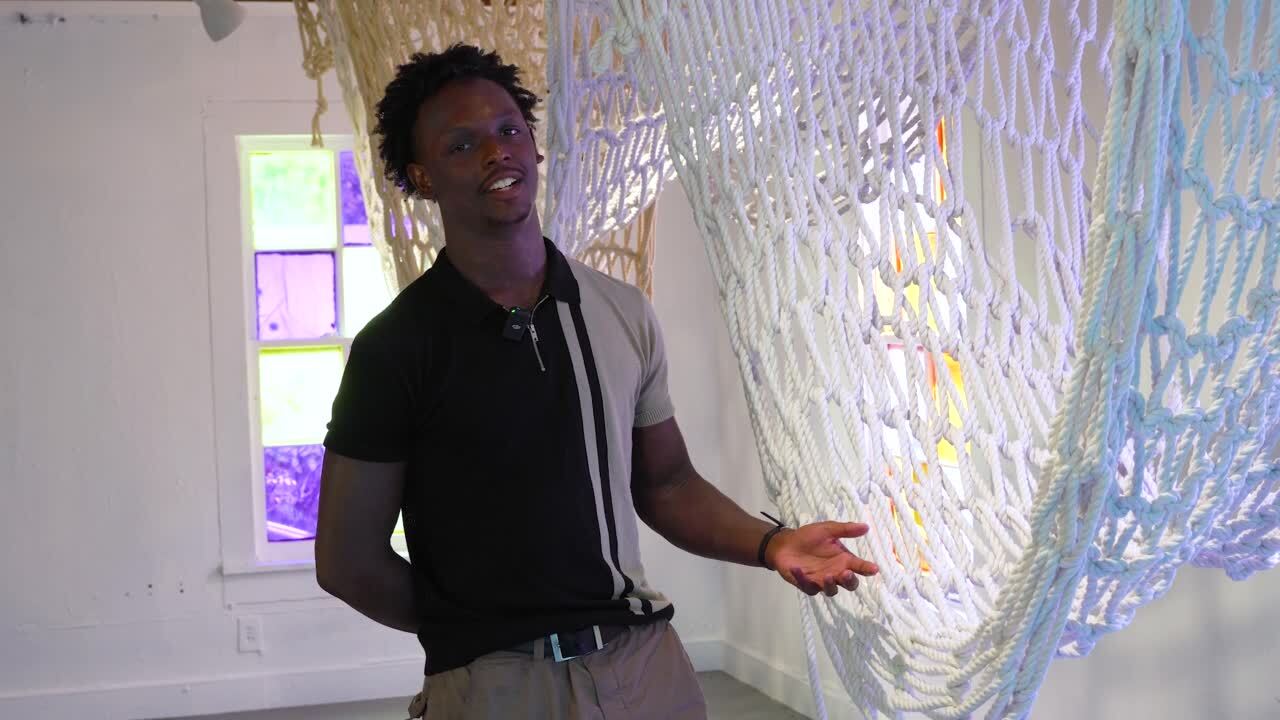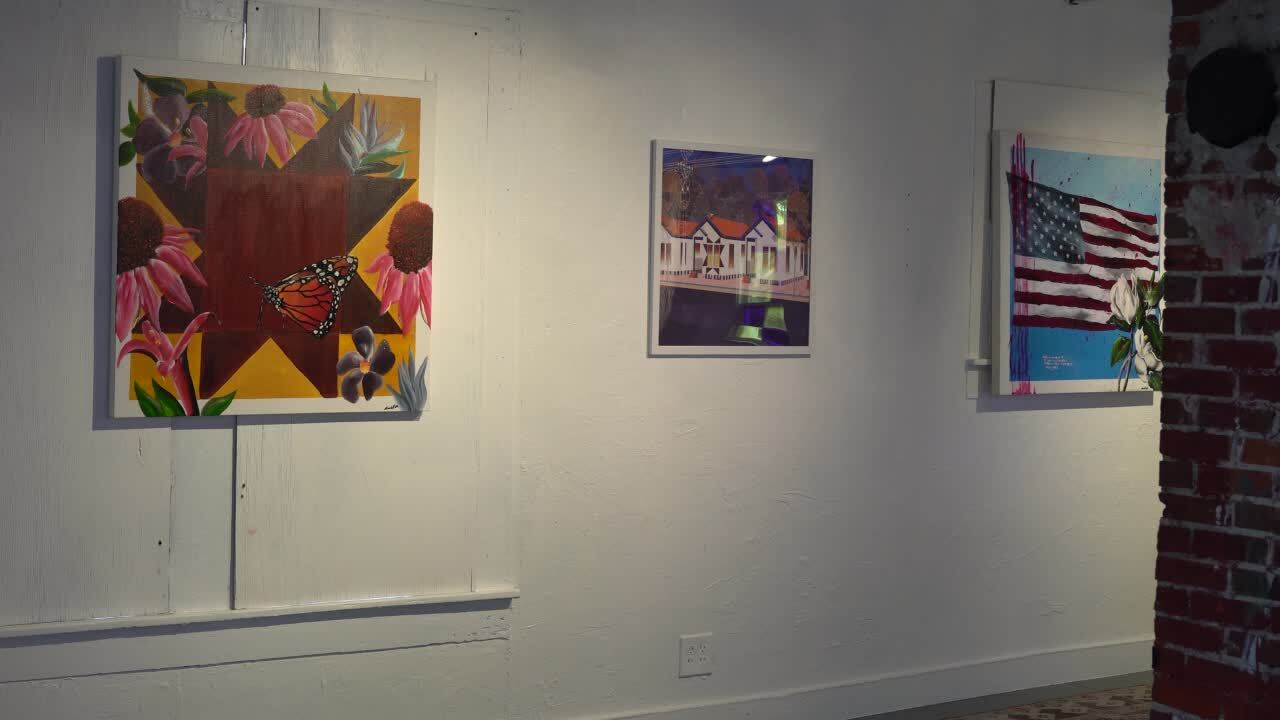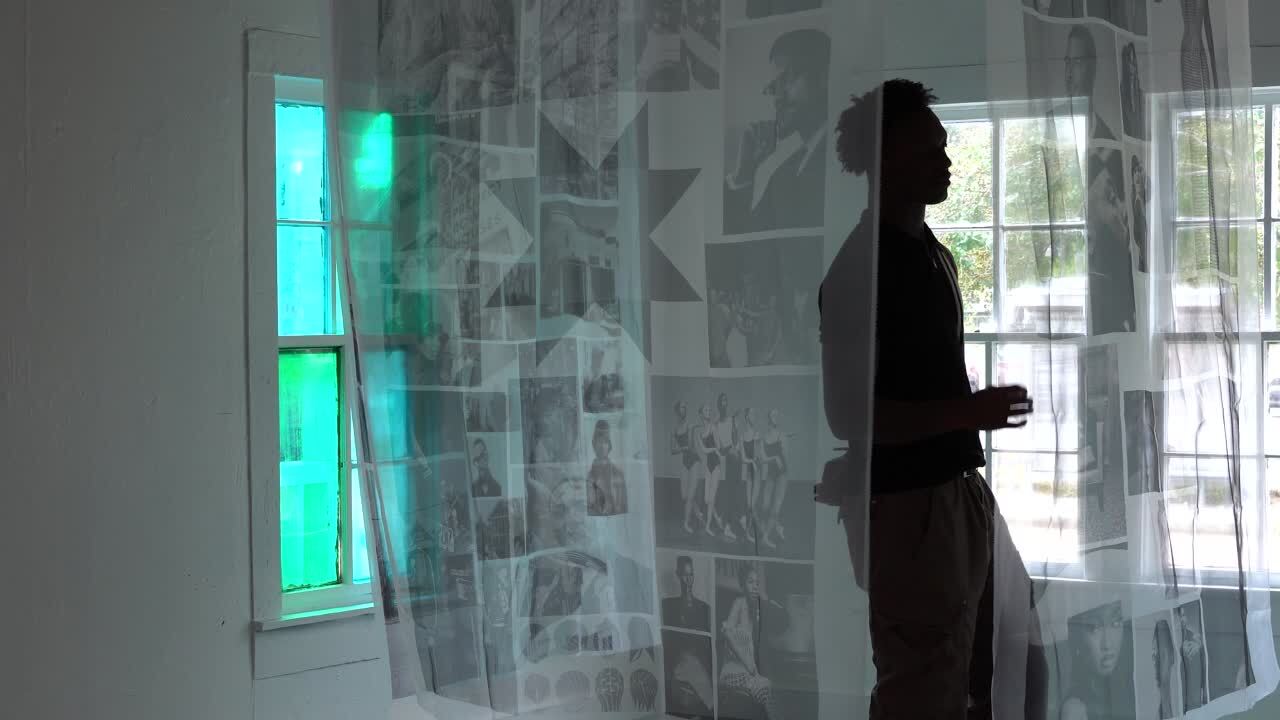
Weaving History into Design
Hines College Interior Architecture student brought Third Ward’s stories to life through art and architecture in a transformative summer residency
by Nicholas Nguyen • October 29, 2025

When Gerald D. Hines College of Architecture and Design student Marshall Bradley first learned he had been selected for the Project Row Houses’ (PHR) Floyd Newsum Summer Studios Mentorship + Residency Program, he knew it was more than a creative opportunity—it was a chance to explore the deep history and humanity of Houston’s Third Ward.
Now, after completing the six-week residency and presenting his exhibition in August and September, Bradley reflects on a summer that not only transformed his perspective as a designer but also deepened his connection to the community he sought to honor.
“Art and design are not just about what we see, they are about what we remember,” said Bradley. “This project taught me that design is history. It tells the story of who we are, where we have been, and what we want to become.”
Stitching Together a Narrative of Black History
Bradley entered the residency with a concept called “Black 360,” a multidisciplinary project exploring how Black identity manifests through everyday spaces, textures, and forms. Inspired by his background in interior architecture and his personal art practice, he aimed to create an environment where design, history, and storytelling coexist.
At the heart of his exhibition stood a symbolic motif: the North Star, a guiding emblem used by enslaved people seeking freedom through the Underground Railroad. Bradley incorporated the star throughout his installation — on the façade, in textiles, and within the artwork itself — as a “beacon for community and liberation.”
“I learned about the North Star through the quilting traditions passed down in Black history,” he explained. “Enslaved people could not read or write, so they used art, such as quilts, hairstyles, and symbols, as coded communication. By weaving those symbols into my design, I wanted to connect past and present, to remind us that creativity has always been a language of survival and hope.”
above: Photos of the row House that bradley painted a mural on and installed his artwork inside (photos by alex barber)
Learning from the Community
Research became the foundation of Bradley’s creative process. He dove into Third Ward’s layered history by combining academic study with lived experience. This included speaking directly with local residents and PRH representatives, as well as consulting his mentor, artist and designer Preston Gaines, a former Hines College adjunct faculty member.
“I used everything I had — conversations with locals, help from Professor Sheryl Tucker de Vazquez, my mentor Preston, and even ‘YouTube University,’” he laughed. “But the most important resource was the community itself.”
Through these interactions, Bradley uncovered a narrative of resilience, pride, and togetherness that defied stereotypes about the neighborhood.
“Growing up, I always heard people say Third Ward was dangerous,” he said. “But when I really spent time there, I saw a village. It is a place where everyone knows each other and looks out for each other. The real danger was how the city ignored the community, covering it with highways and new developments that erased what was already there.”
His research also led him to the “Magnificent Seven.” They are the founding artists of Project Row Houses: James Bettison, Bert Long, Jesse Lott, Rick Lowe, Floyd Newsum, Bert Samples, and George Smith. Their collective vision to reclaim and revitalize the Third Ward’s historic row houses became a defining moment in Houston’s cultural history.
“Learning about those seven artists inspired me to see design as activism,” said Bradley. “They turned art into action, showing how creativity can rebuild a community from the inside out.”
“I wanted to capture how Black culture exists in layers. Every knot in a rope, every thread in fabric represents a story, a person, a history. Together they form the larger structure of community.”
Design Rooted in History
Bradley’s exhibition blurred the boundaries between architecture, art, and history. Visitors stepped into a space layered with visual textures — crocheted fabrics, rope structures, architectural sketches, and photographs — all interwoven to evoke the tactile experience of collective memory. The concept of “spaces within spaces” guided his design approach.
“I wanted to capture how Black culture exists in layers,” he explained. “Every knot in a rope, every thread in fabric represents a story, a person, a history. Together they form the larger structure of community,” Bradley explained.
Color and light also played symbolic roles. Bradley used warm tones to reflect compassion and resilience, and white-painted window frames as symbols of clarity and new beginnings. Each design element, he said, carried both emotional and historical meaning.
“Design without history is just decoration,” Bradley noted. “When you understand the past, you build with intention. You can create something that speaks not only to the eye but also to the soul.”


Lessons from a Residency
“It was like a mini internship for artists,” he said. “We got mentorship from established artists and designers, learned to manage time on big projects, and most importantly, learned how to network.”
Gaines, his mentor, pushed Bradley to embrace creative storytelling in design, seeing architecture not only as spatial organization but also as narrative. “Preston taught me that design is a form of communication,” said Bradley. “He encouraged me to use my work to provoke emotion, culture, and conversation.”
The residency also highlighted PRH’s belief that it takes a village. Bradley depended on the support of peers, mentors, and community members to bring his exhibition to life. Each person played a part by offering guidance, materials, or encouragement, showing how collaboration is essential to both design and community.
Among his biggest takeaways were three lessons he hopes to carry into his career:
- Have fun in the process. “Design doesn’t have to be rigid. Let your imagination breathe.”
- Know your community. “The stories around you can shape who you are as a designer.”
- Network with authenticity. “Be yourself. Your connections will grow naturally from there.”
Looking Forward
Bradley’s work at Project Row Houses marks only the beginning of what he envisions as a larger ongoing project exploring Black identity through design.
“I want this work to continue because Black culture is not a straight line; it is a circle that connects generations across the world,” he said. “From Africa to America to Europe, shared stories are waiting to be told through art, architecture, and design.”
His next goal is to expand the Black 360 concept on a larger scale, incorporating new research and spatial storytelling inspired by history, from the cramped architecture of slave ships to the evolving forms of modern Black expression. Through this work, Bradley hopes to show the progression of history through design, focusing not on pain but on endurance and the creativity that transforms struggle into something positive.
above: Photos of Bradley (top) and guests during the exhibition opening in late August
The Power of Remembering
For Bradley, history serves as a blueprint for design. He views the past as a source of creative problem-solving, finding inspiration in how ancient civilizations engineered essential systems and how enslaved people built shelter from limited means. To him, these examples reveal innovation born from necessity and remind designers to build with purpose, empathy, and memory. Now back at Hines College, Bradley carries forward the lessons of his residency, understanding that design can heal, culture is resilient, and every thread of history has meaning.
“In the end,” he reflected, “My work is about connection — connecting art to architecture, people to place, and past to present. If I can make someone feel seen or inspired through my designs, then I have done my job.”
Through his art, Bradley stitched together Third Ward’s soul, one thread, one memory, and one design at a time.





